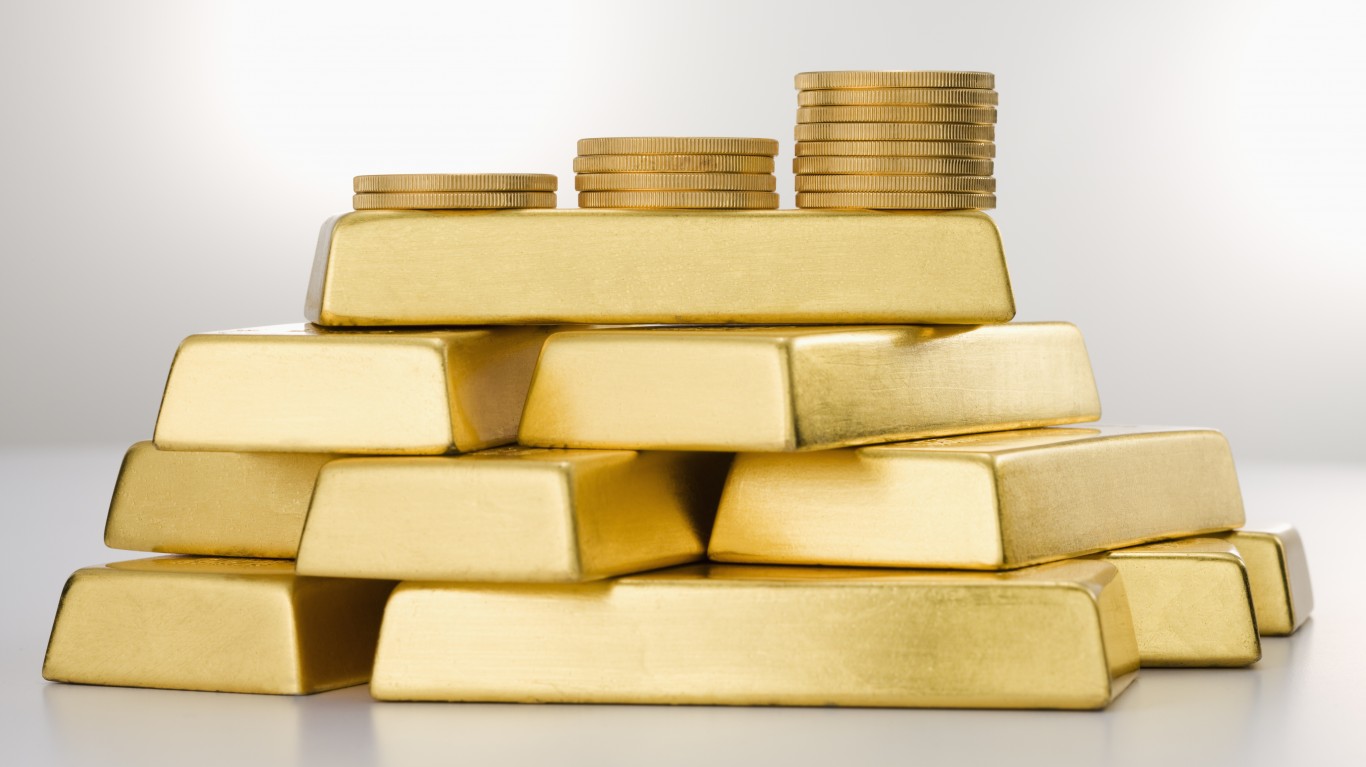
Gold prices reached their 2022 peak in early March, before sinking to their low for the year six months later. Since then, the price has come back to trade Thursday morning up by about 0.8% over the course of the past 12 months. While not exactly just sound and fury signifying nothing, it is difficult to tease out just what the price movement does signify.
For the World Gold Council (WGC), which released its gold outlook for 2023 Thursday morning, it means “an unusually high level of uncertainty surrounding consensus expectations for 2023.” The WGC, an organization comprised of the world’s top gold-mining companies, believes the global economy is at an inflection point after getting slammed by a series of shocks in 2022. In the group’s view, the most important of these shocks “was induced by central banks as they stepped up their aggressive fight against inflation.”
In its outlook for 2023, the WGC looks at three scenarios:
- A severe downturn characterized by stagflation as central banks overshoot or undershoot their inflation targets
- A mild downturn characterized by a weaker U.S. dollar and a halving of inflation
- A soft landing characterized by higher bond yields and increased demand for equities
The first two scenarios are positive for gold while the third is not. A soft landing may boost consumer demand for gold jewelry, but investment dollars going to bonds and equities are major negatives for the yellow metal.
With a recession likely due to inflation and softening economic growth, gold historically provides “protection” from recessionary effects. And if growth falls sharply, gold also offers investors protection from the worst effects.
Dollar weakening is another effect of disinflation and slower growth. Gold historically has recovered from dollar strength within 12 months of reaching its peak. If the dollar index (DXY) follows its historical pattern, returns on gold investments could be above 10% by September of next year.
Geopolitics also has an impact on the price of gold, and in each of its scenarios, the WGC acknowledges geopolitical risk as a moderately positive risk for gold. The group notes that the geopolitical risk premium accounted for a “large proportion of gold’s resilience in 2022.”
Overall, the WGC said, “gold’s return in the environment consensus expects in 2023 is likely to be stable but positive, as it faces competing crosswinds from its drivers. But there are plenty of signals that the economy may not follow a well-telegraphed path.”
In its severe downturn scenario, inflationary pressure remains while geopolitical risk spikes. Central banks “risk overtightening, given the lag of policy transmission in the economy,” leading to “more severe economic fallout and stagflationary conditions.”
A soft landing where business confidence rises and spending increases is a “challenging environment for gold” because investors are more likely to turn to risk assets and bond yields.
The “Goldilocks” scenario encompassing a mild recession, a weaker dollar, and further opening of China in the first half of 2023, could result from the soft-landing scenario in the second half of the year.
The Average American Has No Idea How Much Money You Can Make Today (Sponsor)
The last few years made people forget how much banks and CD’s can pay. Meanwhile, interest rates have spiked and many can afford to pay you much more, but most are keeping yields low and hoping you won’t notice.
But there is good news. To win qualified customers, some accounts are paying almost 10x the national average! That’s an incredible way to keep your money safe and earn more at the same time. Our top pick for high yield savings accounts includes other benefits as well. You can earn up to 3.80% with a Checking & Savings Account today Sign up and get up to $300 with direct deposit. No account fees. FDIC Insured.
Click here to see how much more you could be earning on your savings today. It takes just a few minutes to open an account to make your money work for you.
Our top pick for high yield savings accounts includes other benefits as well. You can earn up to 4.00% with a Checking & Savings Account from Sofi. Sign up and get up to $300 with direct deposit. No account fees. FDIC Insured.
Thank you for reading! Have some feedback for us?
Contact the 24/7 Wall St. editorial team.


